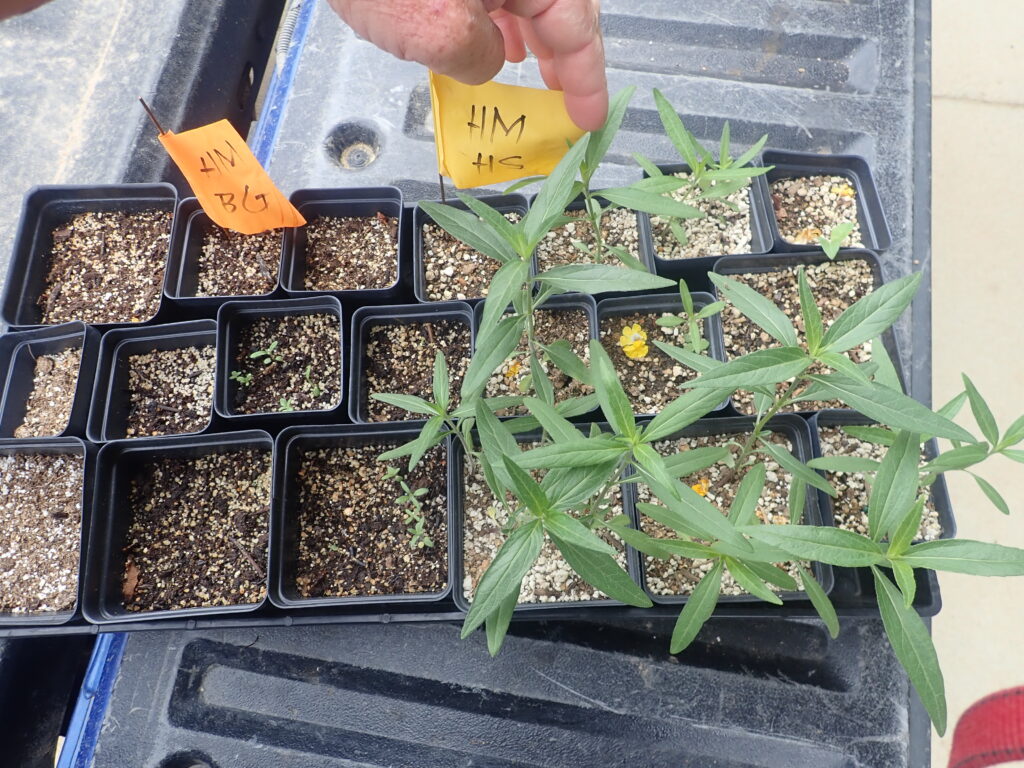Native Seed Germination Tips
Learn how to germinate many of our Colorado native plants species in the Germination Guide for Native Seeds compiled by Wild Ones Front Range Chapter Propagation Co-Chair Jan Midgley. As Jan conducts her research into germination best practices, she will provide updates to this guide. Many thanks to Jan for helping to demystify how to grow native plants from seed!
New to Growing Native Plants?
Based on the ease of seed germination related in the Germination Guide for Native Seeds, we have compiled a list of Easy to Grow Colorado Native Plants that are suitable for novice growers. These plants meet the following criteria:
Seeds need little/no pretreatment
Seeds germinate readily
Plants are easy to grow in gardens
Seeds are easy to collect
Not all of these species are readily available; that will come in time we multiply our supply of seeds by planting these species in our gardens.
Seed Germination Approaches
There are many ways that you can germinate native seeds, each with benefits and drawbacks.
The simplest method is to scatter seeds in your landscape at the beginning of an early winter snowstorm. The snow will blanket the seeds, gently pressing them into the soil and providing initial moisture. It mimics the process seeds go through in nature. With this method, some seeds may be eaten by wildlife and it can be difficult to ensure the seeds have adequate moisture throughout the winter and spring. However, even if you just get a few seedlings, what an easy way to get them!
Another approach is to winter sow native seeds in milk jugs, sealable plastic bags, or other similar containers. These containers will serve as mini-greenhouses once you seal them while allowing moisture to enter and adequate drainage. As a result, they better retain moisture, which increases germination particularly as temperatures warm in the spring. However, there is work required to set these up and monitor them. Check out this video by Wild Ones Front Range member Jenifer Frazer and her friend to demonstrate this germination method.
Finally, you can sow the seeds in cells and place them outdoors. This approach allows for easy transplanting and/or bumping up of seedlings since they germinate in cells. The open cells do dry out faster than the above container method, so more frequent monitoring and watering will be required. Here is a step-by-step guide to help you sow native seeds in this way.
Soil Mix for the Best Germination
Many people have had success germinating native seeds in potting soil. However, one of our members, Brian Rasmussen, decided to test sowing the same seed species in two different soil mixes and compare the results. For three species, Brian sowed the left half of the flat in Black Gold Seedling Mix and the right half of the flat in his homemade native soil mix. The pictures below demonstrate that the native soil mix was the clear winner!
Brian’s native soil, at his home in Boulder County is decomposed granite from a forest slope. He is also at 8200 feet in elevation. The native soil he uses is very high in mineral content – lots of rock and gravel, He amends this decomposed granite with approximately 5-10% compost. Then, the soil is screened with a ¼” screen to remove the larger mineral/rock and larger compost pieces. Then, he mixes 1 part Perlite to 3 parts soil.
After adding seeds, Brian puts a sprinkle of native soil mix as a top dressing. The top dressing is the naive ¼” screened soil mix after sifting out the finer particles with a metal kitchen strainer/screen. The result is a native “squeegee” like material, similar to coarse sand.
It’s important to note that the seeds Brian is germinating are native to the soil he is using. And he germinates outside in natural winter conditions at 8,200 feet in elevation. But given Brian’s success, it may be worth creating your own native soil mix to see if you can yield larger and stronger native seedlings too.



Tracking Native Seed Germination
To help growers track the progress of their native plant propagation efforts, we have created a Native Seed Germination Log. This log is a downloadable spreadsheet, designed as a template for growers to customize based on which plants they are growing, and which plants they might have to donate to spring Native Plant Swaps. The document was originally generated using Google Sheets; the formatting will stay true when downloaded from this page and then uploaded onto Google Drive. We will continue to update this form, adding species as seed becomes more readily available.
Want to learn even more about native plant propagation?
Wild Ones, Front Range chapter members are welcome to join our propagation committee. This group meets monthly to discuss propagation techniques and develops best practices to share with our membership. Email us with your interest!

